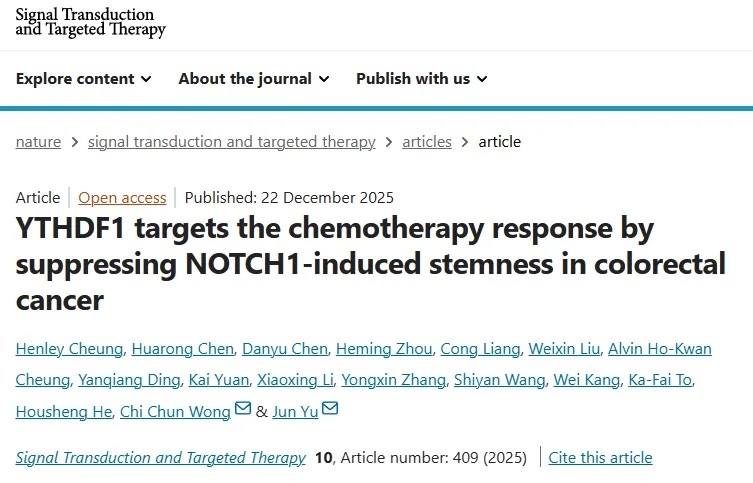Sci Transl Med:体液中癌症相关蛋白可重复定量监测
| 导读 | 7月11日,<em>Sci Transl Med</em>杂志报道了一项旨在优化体液中癌症相关的蛋白质标志物检测的可重复定量监测方法。
寻找合适的样本对假说进行严格的检验,是转化研究主要难题之一。特别在确定蛋白质生物标志物时,这一点尤为突出。缺乏准确,重复性好,灵敏的蛋白质检测手段,使得数百个文献中描述的,潜在的标记蛋白质无法进行系统评估。
<!--mor... |
7月11日,<em>Sci Transl Med</em>杂志报道了一项旨在优化体液中癌症相关的蛋白质标志物检测的可重复定量监测方法。
寻找合适的样本对假说进行严格的检验,是转化研究主要难题之一。特别在确定蛋白质生物标志物时,这一点尤为突出。缺乏准确,重复性好,灵敏的蛋白质检测手段,使得数百个文献中描述的,潜在的标记蛋白质无法进行系统评估。
<!--more-->
本研究运用高通量的方法,对人类蛋白质检测的选择反应监测(SRM)技术进行了发展和完善。该方法适用于1000多个癌症相关蛋白质的检测实验。这些蛋白在功能上与候选致癌突变相关。
研究者运用这些检测方法,以确定目标蛋白在两个临床相关样本:血浆和尿液中,可被检出的灵敏度。结果发现,可跨越5个丰度数量级,从血浆中检测出182种蛋白质。灵敏度可达到浓度低于10毫微克/毫升。
因为尿液中蛋白的浓度范围较窄,所以该方法可从中检测出408种蛋白质。此外,研究表明,这些SRM检测允许可重复地定量监测83名患者血浆中的34个生物候选标志物。
通过访问整个检测方法数据库,研究人员将能够针对他们感兴趣的癌症相关的蛋白质,以血浆或尿液标本中相关检测信息作为指导,检测任何类型的标本。 SRM检测癌症相关的蛋白质生成的参考数据库,将是一个宝贵的资源,可大大促进生物标志物验证研究的进展。
<div id="ztload">
<div> </div>
<div>
<div>
<img src="http://www.bioon.com/biology/UploadFiles/201207/2012071611114647.jpg" alt="" width="113" height="149" border="0" hspace="0" />
<a title="" href="http://dx.doi.org/10.1016/j.cell.2011.10.017" target="_blank">doi:</a><a title="" href="http://stm.sciencemag.org/content/4/142/142ra94.abstract" target="_blank">10.1016/j.cell.2011.10.017</a>
PMC:
PMID:
</div>
<div>
<br/><strong>Reproducible Quantification of Cancer-Associated Proteins in Body Fluids Using Targeted Proteomics</strong><br/>
Ruth Hüttenhain1,2,*,?,Martin Soste1,*,Nathalie Selevsek1,Hannes R?st1,3,Atul Sethi1,3,Christine Carapito1,Terry Farrah4,Eric W. Deutsch4,Ulrike Kusebauch4,Robert L. Moritz4,Emma Niméus-Malmstr?m5,Oliver Rinner6 andRuedi Aebersold
The rigorous testing of hypotheses on suitable sample cohorts is a major limitation in translational research. This is particularly the case for the validation of protein biomarkers; the lack of accurate, reproducible, and sensitive assays for most proteins has precluded the systematic assessment of hundreds of potential marker proteins described in the literature. Here, we describe a high-throughput method for the development and refinement of selected reaction monitoring (SRM) assays for human proteins. The method was applied to generate such assays for more than 1000 cancer-associated proteins, which are functionally related to candidate cancer driver mutations. We used the assays to determine the detectability of the target proteins in two clinically relevant samples: plasma and urine. One hundred eighty-two proteins were detected in depleted plasma, spanning five orders of magnitude in abundance and reaching below a concentration of 10 ng/ml. The narrower concentration range of proteins in urine allowed the detection of 408 proteins. Moreover, we demonstrate that these SRM assays allow reproducible quantification by monitoring 34 biomarker candidates across 83 patient plasma samples. Through public access to the entire assay library, researchers will be able to target their cancer-associated proteins of interest in any sample type using the detectability information in plasma and urine as a guide. The generated expandable reference map of SRM assays for cancer-associated proteins will be a valuable resource for accelerating and planning biomarker verification studies.
<br/>来源:生物谷
</div>
</div>
</div>
寻找合适的样本对假说进行严格的检验,是转化研究主要难题之一。特别在确定蛋白质生物标志物时,这一点尤为突出。缺乏准确,重复性好,灵敏的蛋白质检测手段,使得数百个文献中描述的,潜在的标记蛋白质无法进行系统评估。
<!--more-->
本研究运用高通量的方法,对人类蛋白质检测的选择反应监测(SRM)技术进行了发展和完善。该方法适用于1000多个癌症相关蛋白质的检测实验。这些蛋白在功能上与候选致癌突变相关。
研究者运用这些检测方法,以确定目标蛋白在两个临床相关样本:血浆和尿液中,可被检出的灵敏度。结果发现,可跨越5个丰度数量级,从血浆中检测出182种蛋白质。灵敏度可达到浓度低于10毫微克/毫升。
因为尿液中蛋白的浓度范围较窄,所以该方法可从中检测出408种蛋白质。此外,研究表明,这些SRM检测允许可重复地定量监测83名患者血浆中的34个生物候选标志物。
通过访问整个检测方法数据库,研究人员将能够针对他们感兴趣的癌症相关的蛋白质,以血浆或尿液标本中相关检测信息作为指导,检测任何类型的标本。 SRM检测癌症相关的蛋白质生成的参考数据库,将是一个宝贵的资源,可大大促进生物标志物验证研究的进展。
<div id="ztload">
<div> </div>
<div>
<div>
<img src="http://www.bioon.com/biology/UploadFiles/201207/2012071611114647.jpg" alt="" width="113" height="149" border="0" hspace="0" />
<a title="" href="http://dx.doi.org/10.1016/j.cell.2011.10.017" target="_blank">doi:</a><a title="" href="http://stm.sciencemag.org/content/4/142/142ra94.abstract" target="_blank">10.1016/j.cell.2011.10.017</a>
PMC:
PMID:
</div>
<div>
<br/><strong>Reproducible Quantification of Cancer-Associated Proteins in Body Fluids Using Targeted Proteomics</strong><br/>
Ruth Hüttenhain1,2,*,?,Martin Soste1,*,Nathalie Selevsek1,Hannes R?st1,3,Atul Sethi1,3,Christine Carapito1,Terry Farrah4,Eric W. Deutsch4,Ulrike Kusebauch4,Robert L. Moritz4,Emma Niméus-Malmstr?m5,Oliver Rinner6 andRuedi Aebersold
The rigorous testing of hypotheses on suitable sample cohorts is a major limitation in translational research. This is particularly the case for the validation of protein biomarkers; the lack of accurate, reproducible, and sensitive assays for most proteins has precluded the systematic assessment of hundreds of potential marker proteins described in the literature. Here, we describe a high-throughput method for the development and refinement of selected reaction monitoring (SRM) assays for human proteins. The method was applied to generate such assays for more than 1000 cancer-associated proteins, which are functionally related to candidate cancer driver mutations. We used the assays to determine the detectability of the target proteins in two clinically relevant samples: plasma and urine. One hundred eighty-two proteins were detected in depleted plasma, spanning five orders of magnitude in abundance and reaching below a concentration of 10 ng/ml. The narrower concentration range of proteins in urine allowed the detection of 408 proteins. Moreover, we demonstrate that these SRM assays allow reproducible quantification by monitoring 34 biomarker candidates across 83 patient plasma samples. Through public access to the entire assay library, researchers will be able to target their cancer-associated proteins of interest in any sample type using the detectability information in plasma and urine as a guide. The generated expandable reference map of SRM assays for cancer-associated proteins will be a valuable resource for accelerating and planning biomarker verification studies.
<br/>来源:生物谷
</div>
</div>
</div>
 腾讯登录
腾讯登录
还没有人评论,赶快抢个沙发